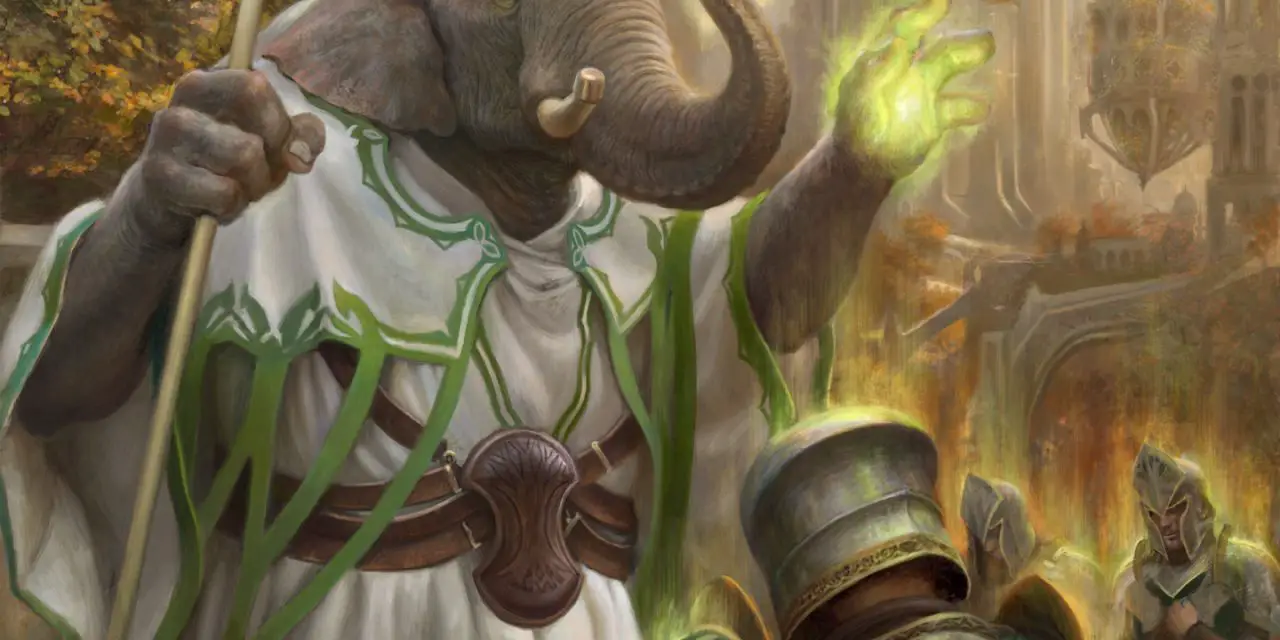Every adventurer knows that the difference between success and failure can hinge on the smallest of details.
Whether you’re deciphering ancient runes in a forgotten temple, sneaking past a slumbering dragon, or trying to charm a suspicious guard, having a little extra help can make all the difference.
Enter the Guidance spell—a humble cantrip with the power to tip the scales in your favor at just the right moment.
In this article, we’re diving deep into the magical world of Guidance. We’ll explore what this spell is all about, uncover the best ways to wield it effectively, and weigh its pros and cons to see if it deserves a spot in your spellcasting repertoire. By the end, you’ll be ready to add a sprinkle of divine assistance to your D&D adventures.
So grab your spellbook, gather your party, and let’s see just what this spell has to offer!
What is Guidance 5e?
Guidance is a handy cantrip that lets you boost your allies’ ability checks with a touch of divine magic.
With a simple action, a quick word, and a touch, you grant a willing creature a bonus d4 to roll and add to one ability check of their choice within the next minute.
It’s a versatile, low-cost spell that can turn the tide in crucial moments, whether you’re deciphering ancient texts, sneaking past guards, or persuading a stubborn merchant. Because who wouldn’t appreciate a little bit of divine guidance in any of these situations?!
LEVEL: Cantrip
CASTING TIME: 1 Action
RANGE/AREA: Touch
COMPONENTS: V, S
DURATION: 1 minute, Concentration required
SCHOOL: Divination
ATTACK/SAVE: None
DAMAGE/EFFECT: Buff
SPELL LISTS: Artificer, Cleric, Druid, Bard (College of Spirits)
You touch one willing creature. Once before the spell ends, the target can roll a d4 and add the number rolled to one ability check of its choice. It can roll the die before or after making the ability check. The spell then ends.

How to Use Guidance 5e Effectively
Mastering the Guidance spell can make you the unsung hero of your adventuring party. It’s a fantastic way to make sure that your allies are always bringing their best to any ability check they need to make!
Here’s how to wield this cantrip like a pro:
Optimal Situations
Guidance shines brightest in non-combat scenarios where ability checks are most frequent.
Picture this: you or an ally are trying to pick a tricky lock, decipher an ancient script, safely disarm a trap, or charm a wary noble. Casting Guidance beforehand can give that extra nudge needed to succeed.
Remember, it’s all about those crucial moments where every bit of help counts!
Tactical Usage
As with every spell, timing truly is everything.
Cast Guidance just before your ally makes an ability check. The spell lasts up to a minute, so you have a bit of leeway. In most situations, this should be plenty of time.
Just keep in mind it requires concentration—meaning you can’t have another concentration spell active at the same time.
If you’re concentrating on something like Wall of Thorns to keep a group of enemies back but then go to cast Guidance on your Rogue who is trying to disarm a trap, the first spell will immediately end!
Party Dynamics and Communication
This is the most important factor to be aware of.
Coordinate with your party to maximize the spell’s utility. Be sure to let your teammates know when you’ve got Guidance ready to go.
Try to get them in the habit of asking you for Guidance before they go to make an ability check. That way, you can reliably give them their bonuses, but you don’t have to worry as much about accidentally forgetting you have it prepared.
Imagine your Rogue about to disarm a deadly trap or your Bard preparing for a high-stakes performance—your timely intervention could be the key to their success. Communication and planning are your best friends here.
With these tips in mind, you’ll be able to use Guidance to its fullest potential, ensuring your party always has that extra edge when it matters most.
Pros and Cons of Guidance 5e
Like any spell in D&D 5e, Guidance has its high points and low points. Let’s break it down:
Pros
Versatility: Guidance can be applied to a wide range of ability checks, from Acrobatics to Zoology (well, Nature checks, but you get the idea). This makes it a go-to spell in countless situations.
Low Cost: As a cantrip, it doesn’t consume any of your precious spell slots. You can cast it freely without worrying about conserving your magical resources.
Immediate Benefit: The bonus d4 can be a game-changer, turning near-misses into successes. It’s a tangible, immediate boost that can make all the difference.
Cons
Concentration Requirement: You need to maintain concentration to keep the spell active. This means you can’t use other concentration spells at the same time, and taking damage could potentially disrupt it.
Limited to Ability Checks: Guidance doesn’t help with attack rolls or saving throws. Its usefulness is confined to ability checks (typically made in non-combat scenarios), limiting its versatility in the heat of battle.
Range and Touch: You have to be right next to the person you’re casting it on. This can be tricky in situations where distance or danger separates you from your allies.
Planning Ahead: Remember that Guidance is an action, not a reaction. You can’t wait to cast this until after you’ve seen if the ability check succeeds or fails. For example, your Paladin tries to calm down a drunk and hostile bar patron, but fails the Persuasion check by 1. Had you cast Guidance first, they would have succeeded (rolling the d4 either before or after their ability check), but now that they have attempted the check, it’s too late to cast it. Coordinate and plan ahead!
By weighing these pros and cons, you can better decide when and how to use Guidance to support your party. It’s all about playing to the spell’s strengths and being mindful of its limitations.
Thankfully, the pros typically far outweigh the cons with Guidance, and it’s hard to complain about a cantrip that does so much heavy lifting!
FAQs – Guidance 5e
Absolutely! As long as you’re a willing creature, you can cast Guidance on yourself. This can be particularly handy if you’re making an important ability check and need that extra edge. Just remember to keep concentration in mind!
While Guidance is primarily designed for non-combat scenarios, it can still be useful in certain combat situations.
For example, if your Rogue needs to disarm a trap mid-battle or if a character needs to make a crucial ability check, Guidance can provide that extra boost. Just remember, it requires an action to cast and concentration to maintain, so weigh the benefits carefully.
Yes, Guidance stacks with other bonuses. The d4 from Guidance can be added on top of any proficiency bonuses, ability modifiers, or other spell effects that apply to the ability check.
However, it doesn’t stack with itself, so you can’t double-dip by casting it multiple times on the same check.
In this case, you roll with advantage on the skill check (two d20s, take the highest) and then add the bonus from Guidance alongside any other bonuses (ability modifier, proficiency, etc) to determine your total roll.
Yes! Initiative rolls are ability checks, which means that Guidance can be used to give them a bonus!
If you lose concentration, the Guidance spell ends immediately. If you cast another concentration spell or fail your concentration saving throw upon taking damage, the spell’s effect is lost, and your ally won’t get the bonus d4 for their ability check.
Conclusion – Guidance 5e
Guidance might be a humble cantrip, but its impact on your D&D adventures can be nothing short of magical.
From tipping the scales in crucial skill checks to bolstering your party’s efforts in and out of combat, this spell is a versatile tool that every Cleric or Druid should have at their disposal.
By understanding how to use it effectively and being mindful of its pros and cons, you can ensure that Guidance becomes a key part of your spellcasting arsenal.
So now it’s your turn to join the conversation!
We’d love to hear your stories and strategies for using Guidance in your own campaigns! Have you had a moment where this spell made all the difference? Share your experiences in the comments below, and let’s learn from each other.
And if you enjoyed this article, don’t miss out on more tips, tricks, and deep dives into the world of D&D. Sign up for the Tabletop Joab newsletter to stay updated on all things tabletop gaming.









